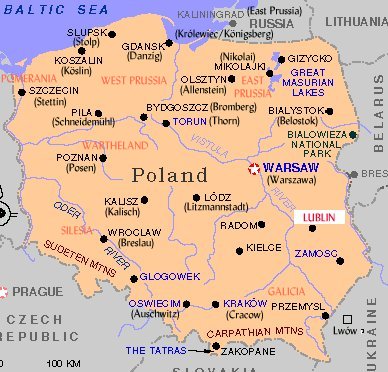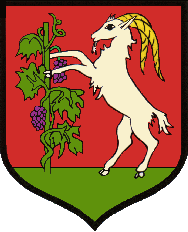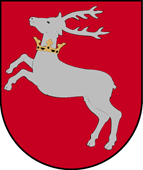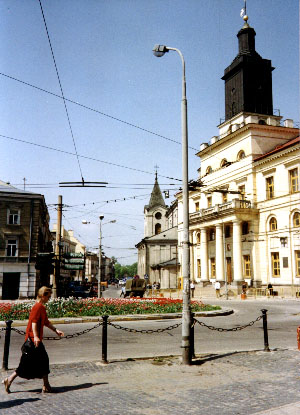


LUBLIN, POLAND
 Welcome to this little page on Lublin in eastern Poland (see the map opposite). Lublin is a very old town, receiving its charter in 1317, and is located south-east of Warsaw (Warszawa). It is not far distant from the Belarussian and Ukrainian borders. Unlike the northern and western Polish territories, which were formerly German and Austrian, Lublin was a part of the old Congress Poland which was, for a while, a part of the Russian Empire. It became a part of independent Poland in 1918.
Welcome to this little page on Lublin in eastern Poland (see the map opposite). Lublin is a very old town, receiving its charter in 1317, and is located south-east of Warsaw (Warszawa). It is not far distant from the Belarussian and Ukrainian borders. Unlike the northern and western Polish territories, which were formerly German and Austrian, Lublin was a part of the old Congress Poland which was, for a while, a part of the Russian Empire. It became a part of independent Poland in 1918.
My own family name, Królewiec, has nothing to do with this region but is the ancient Polish name of the German city of Königsberg in East Prussia, today called Kaliningrad and a part of the Russian Federation. You will find Kaliningrad at the top of the map in the enclave marked "Russia". Królewiec (Königsberg/Kaliningrad) was briefly a part of Poland some centuries ago.


 Lublin is the capital of the Lublin Voivod (County) which is shown in the map above. The picturesque old town is characterised by narrow streets and old houses and is a popular spot for tourists. In the photograph to the right you can see the lovely old Market Square which has changed little over the centuries.
Lublin is the capital of the Lublin Voivod (County) which is shown in the map above. The picturesque old town is characterised by narrow streets and old houses and is a popular spot for tourists. In the photograph to the right you can see the lovely old Market Square which has changed little over the centuries.
 On a hill facing the old town there is the huge and dramatic Neo-Gothic castle, which currently houses the excellent Lublin Museum. Prior to its development as a museum the castle was a prison dating from the early nineteenth century to 1954 (the year I was born!). The interior of the castle's Gothic chapel, the church of the Holy Trinity, is adorned by unique Byzantine murals which are presently being renovated.
On a hill facing the old town there is the huge and dramatic Neo-Gothic castle, which currently houses the excellent Lublin Museum. Prior to its development as a museum the castle was a prison dating from the early nineteenth century to 1954 (the year I was born!). The interior of the castle's Gothic chapel, the church of the Holy Trinity, is adorned by unique Byzantine murals which are presently being renovated.
 Majdanek State Museum is one of the national memorials in Poland to the Holocaust and one of the less pleasant historical reminders of the near past. Between 1941 and 1944 several hundred thousand people from all over Europe were murdered in this camp. The prisoners barracks, gas chambers and the crematoria have all been preserved. It is important that such places as these be preserved to remind people of the levels of depravity that human beings are able to stoop to.
Majdanek State Museum is one of the national memorials in Poland to the Holocaust and one of the less pleasant historical reminders of the near past. Between 1941 and 1944 several hundred thousand people from all over Europe were murdered in this camp. The prisoners barracks, gas chambers and the crematoria have all been preserved. It is important that such places as these be preserved to remind people of the levels of depravity that human beings are able to stoop to.

 The Lublin region is justly proud of being at the crossroads of European history while also being one of the most unspoilt areas of Poland. Traditional crafts, thatched houses, attractive unspoilt villages, ancient and historic monuments and a richly varied countryside provides the visitor with an intriguing insight into Poland's varied history as well as its traditions.
The Lublin region is justly proud of being at the crossroads of European history while also being one of the most unspoilt areas of Poland. Traditional crafts, thatched houses, attractive unspoilt villages, ancient and historic monuments and a richly varied countryside provides the visitor with an intriguing insight into Poland's varied history as well as its traditions.
The photograph to the left shows the Dominican Monastery in Lublin. Poland is a Catholic country and is very much dominated by Catholic attitudes, though these are now giving way to the secular humanism that is coming in from the West. Both of these spiritual currents carry good and evil with them.
 The picture to the right shows Lublin's Kraków (Cracow) Gate and anyone who has visited the ancient capital of Poland, Kraków, and seen its architechture, will appreciate why it has this name. This scene is typical of the narrow streets of the town centre of old Lublin.
The picture to the right shows Lublin's Kraków (Cracow) Gate and anyone who has visited the ancient capital of Poland, Kraków, and seen its architechture, will appreciate why it has this name. This scene is typical of the narrow streets of the town centre of old Lublin.
The picture below shows the new Town Hall which looks very much like those of central and eastern Poland. Indeed, there are strong resemblances between Lublin's old Town Hall square and that of the former city of Lwów, today called L'viv (L'vov/Lemberg) in Western Ukraine, which was lost by Poland to the then USSR at the end of the Second World War. Much of the Western Ukraine still preserves its former Polish and Austrian architecture. In the opinion of many, eastern Poland is a time capsule that hearkens back to a bygone century.

Below you will see Zamborzyce, an artificial lake created in Lublin, tyopical of some of the beautiful nature walks of the region. I hope you have enjoyed this brief introduction to the city of Lublin and to its surrounding regions.

If you would like to know more about Lublin and environs, then we recommend clicking here for an independent homepage with useful tourist information.


